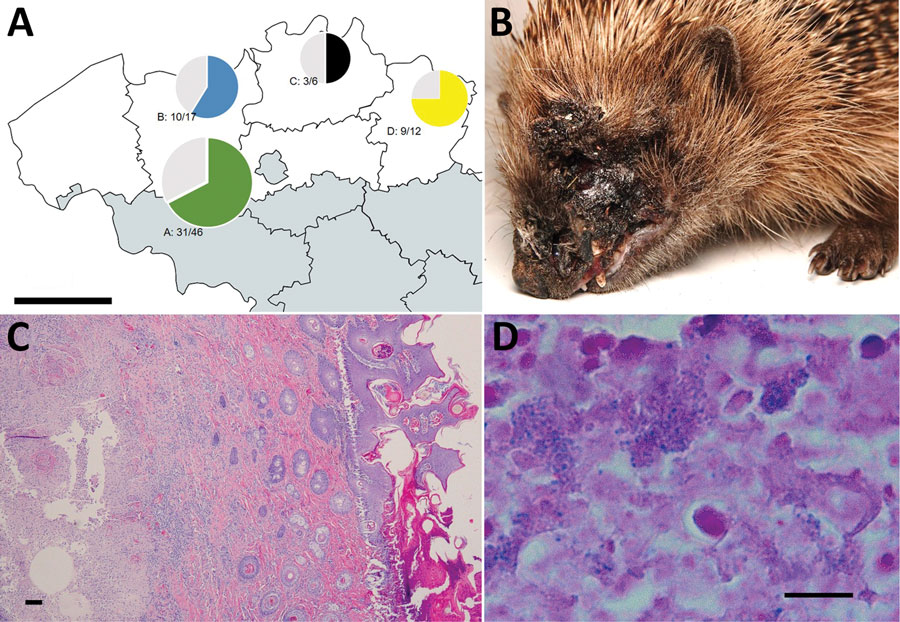Volume 27, Number 10—October 2021
Dispatch
Widespread Disease in Hedgehogs (Erinaceus europaeus) Caused by Toxigenic Corynebacterium ulcerans
Figure 1

Figure 1. Toxigenic Corynebacterium ulcerans as cause of widespread disease in hedgehogs (Erinaceus europaeus), Flanders, Belgium. A) Locations of 81 hedgehogs with lesions on the head or limbs from 4 regions in Flanders, Belgium, who were tested for C. ulcerans. Green, blue, black, and yellow indicate proportion of positive animals; gray indicates proportion of negative animals. Regions: A, Geraardsbergen; B, Merelbeke; C, Herenthout; D, Oudsbergen. Scale bar = 50 km. B) Representative clinical state with necrotizing facial dermatitis in 1 male hedgehog from Merelbeke. C) Ulcerative dermatitis with suppurative exudation and inflammation extending into the subcutis and underlying skeletal muscles. Hematoxylin and eosin stained; scale bar = 100 μm. D) Microcolonies of gram-positive bacilli in suppurative exudate. Gram stain; scale bar = 10 μm.